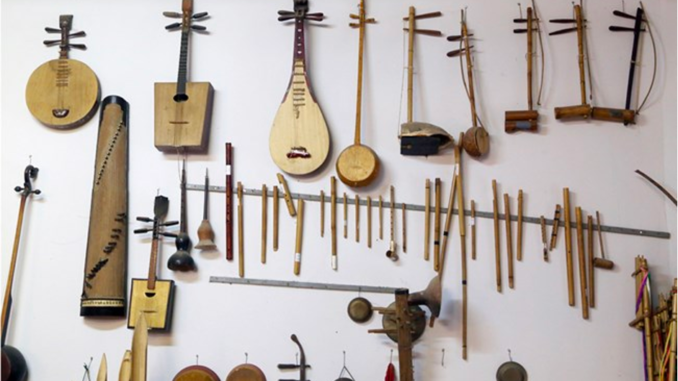
Vietnam has the priceless treasure of traditional musical instruments which has been established and enriched for thousands of years. Through Vietnamese musical instruments, feelings and wishes for a better life are expressed; wills and spirits against invaders are raised higher as well as respects are shown to ancestors of Vietnamese people. Most of the Vietnamese traditional musical instruments have simple structures but require delicateness and many years of hard work from the artists to perform the perfect melodies. If you are interested in discovering Vietnamese culture, read on to have a deeper knowledge of Vietnamese musical instruments with pictures and descriptions.
History of Vietnamese Musical Instruments
The origin of some Vietnamese musical instruments can be dated back to thousands of years ago, in the Hung Kings Dynasty, the first form of government known in Vietnam, while others were invented or upgraded from primitive ones about couple hundreds of years ago.
Vietnamese traditional instruments are played at performances of Vietnam traditional music including Xoan singing, Quan Ho love duet singing, Ca Tru ceremonial singing, Hue Royal Court Music, and Central Highland’s music which have all been recognized by UNESCO as intangible heritage of humanity.
Most of the traditional Vietnamese musical instruments are string, wind, and percussion instruments, which are made of natural materials like wood, bamboo, stones, ivory, and animal skins.
They can be played in solo or orchestra performances. While people in northern Vietnam use more string instruments, people in the mountainous area tend to create melodies with percussion and wind instruments.
Typical Traditional Musical Instruments in Vietnam
1.Vietnamese Wind Musical Instrument
Sáo Trúc (Bamboo Flute)
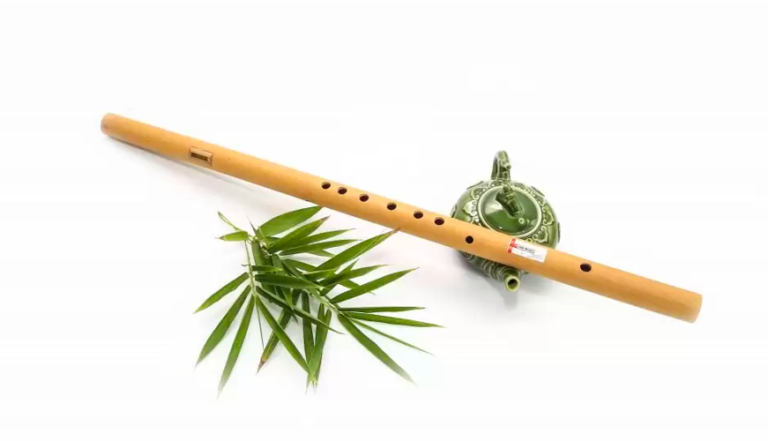
Made from a segment of bamboo carved an oval hole to blow in one head and six other holes along the body to adjust the sound, Bamboo flute is believed to contain the musical essence of the Vietnamese countryside along with the four tranquil seasons.
Kèn Bầu (Obeos)
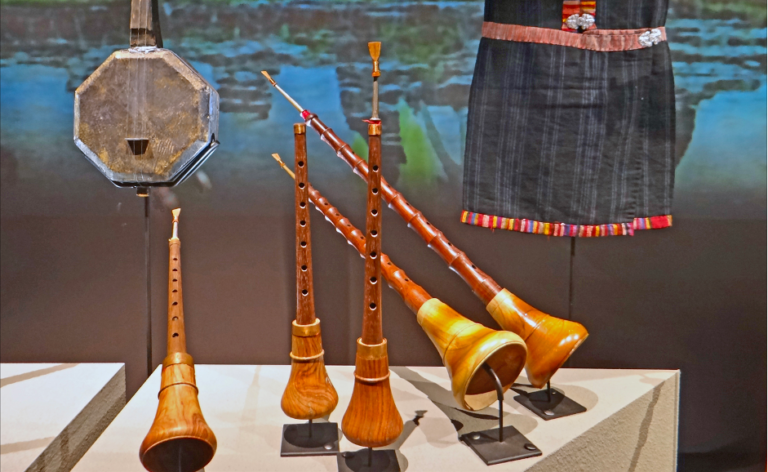
Ken Bau is commonly used in weddings, funerals, celebrations and especially in Nha Nhac (Vietnamese Court Music). This trumpet has many versions based on regions and uses, mainly classified into three types: low-sound trumpet, medium-sound trumpet (most popular) and high-sound one.
Khèn
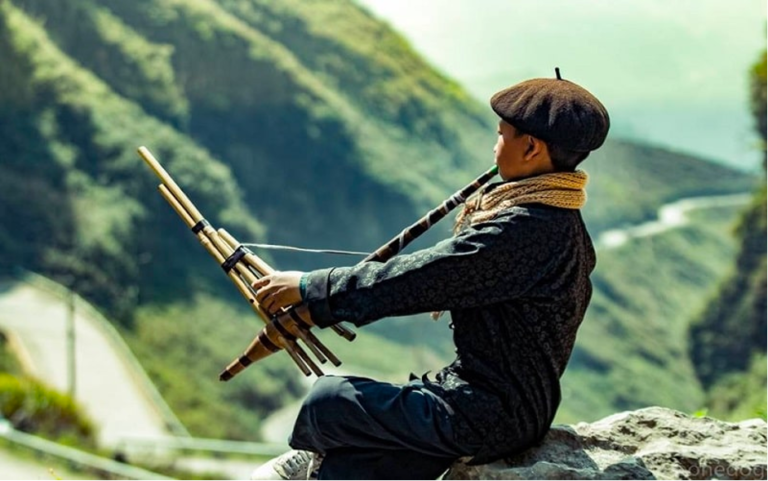
Khen is a traditional musical instrument of the Mong ethnic people in Vietnam. It is a panpipe, made of 6 to 12 bamboo tubes of different lengths, bound together and attached to a gourd or wooden resonator. The khen is played by blowing into the different tubes, which produce a range of notes.
The khen is an important part of Mong culture and is used in a variety of occasions, including festivals, weddings, and funerals. It is also used to accompany singing and dancing. The khen has a distinctive sound that is both haunting and beautiful.
2. Vietnamese String Musical Instrument
Đàn Bầu (Monochord)
Dan Bau or Doc Huyen Cam is the one-string musical instrument of Vietnamese people, strummed by a rod or a plectrum. Dan Bau has two types of bamboo and wooden box:
Bamboo: The body is made of one piece of bamboo which is approximately 120 cm in length and 12 cm in diameter. The surface is whittled partly.
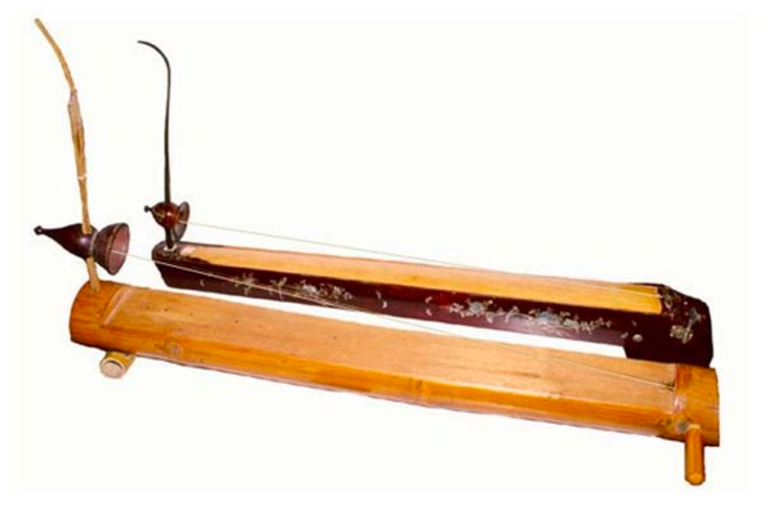
Wooden Box: This is the improved version, mainly for professional artists. This type has many different shapes and sizes. The structure is similar to the old version.
The string runs through the body. In the past, it was made of silk, later it has been replaced by iron. “Bau” part is made of half a gourd. It works to increase the volume for the instrument. Today, it can be made of wood with the role of aesthetics.
Đàn Nhị (Vietnamese Two-chord Fiddle)
Dan Nhi or Dan Co has appeared in Vietnamese traditional music for a long time, has become familiar and close to all Vietnamese people. It is respected as a precious thing in the country. Dan Nhi acts an indispensable role in Vietnamese traditional orchestra from past to present.
Vietnamese people call it Dan Co because its shape is like a stork: the wire axis bows down as the stork’s neck, the body is like a stork’s body and the sound is similar to the stork’s noise.
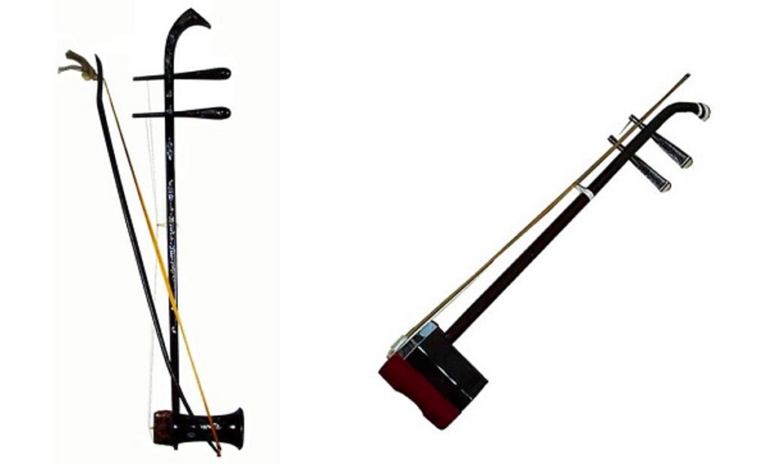
Đàn Đáy
This is one of the longest musical instruments created by Vietnamese people in Le Dynasty (XV-XVIII century). In Ca Tru or A Dao singing, Dan Day is the familiar instrument along with drum and beat. Besides, the sound of Dan Day is very appropriate to be the background for sad old poems. More special than other musical instruments, Dan Day has a unique way of strumming, so it can imitate a lot of voices and as a result, there is a diversity in playing.
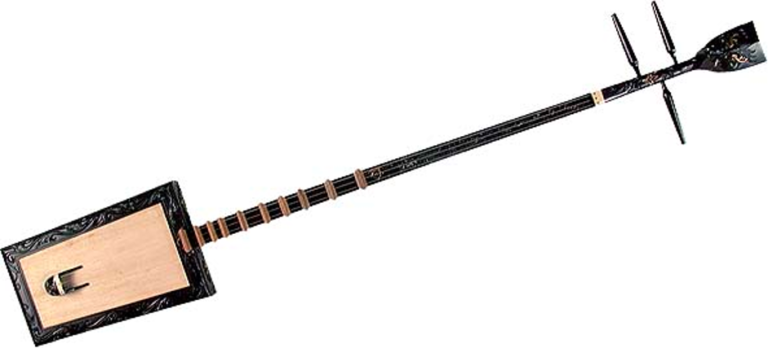
Đàn Tỳ Bà (Four-string Guitar)
Dan Ty Ba is a string instrument which is frequently present in a traditional orchestra. This pear-shaped instrument had twisted silk strings but be made by nylon today. It is a popular instrument in the Royal Court and if your Vietnam travel packages take you through Hue City, you will have a chance to encounter it. Dan Ty Ba is best when accompanying Ca Tru singing, which is recognized by UNESCO as intangible heritage of humanity
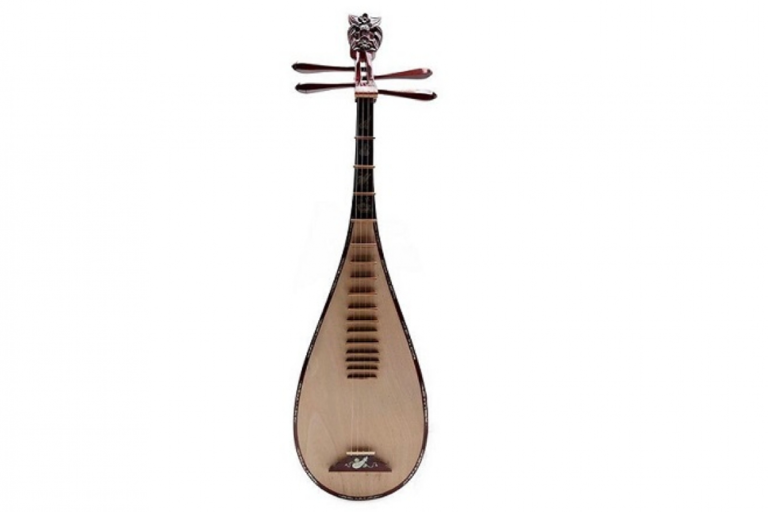
Đàn Nguyệt (Two-string Guitar)
According to ancient carvings, Dan Nguyet translates into English as “moon lute” and it appeared in Vietnam in the 11th century. Its popularity has been maintained and Dan Nguyet is considered an important part of the culture of the Kinh people. It is a two-stringed instrument, strings formerly of silk bit now nylon, and played in both folk music and classical music.
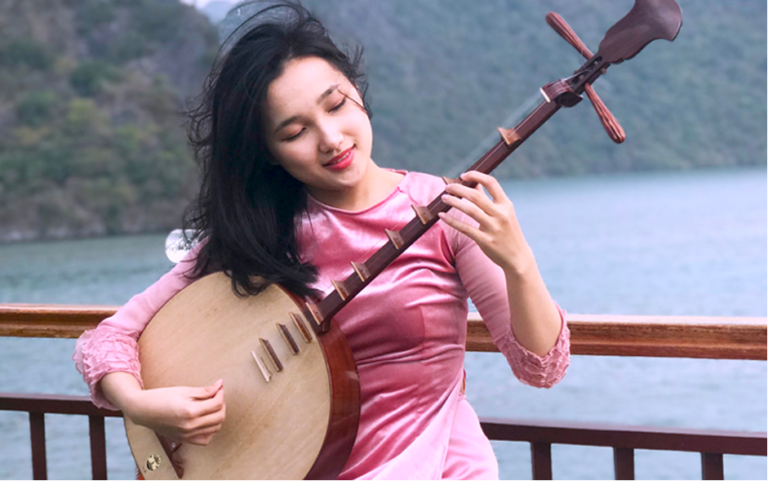
Dan Nguyet is distinguished by its pure, loud sound as well as its capacity to express different emotional moods. It is often used for solemn events and rituals, funerals and musical recitals. This traditional instrument can be played in solo, as a part of an orchestra, or combining with other instruments.
3. Vietnamese Percussion Musical Instrument
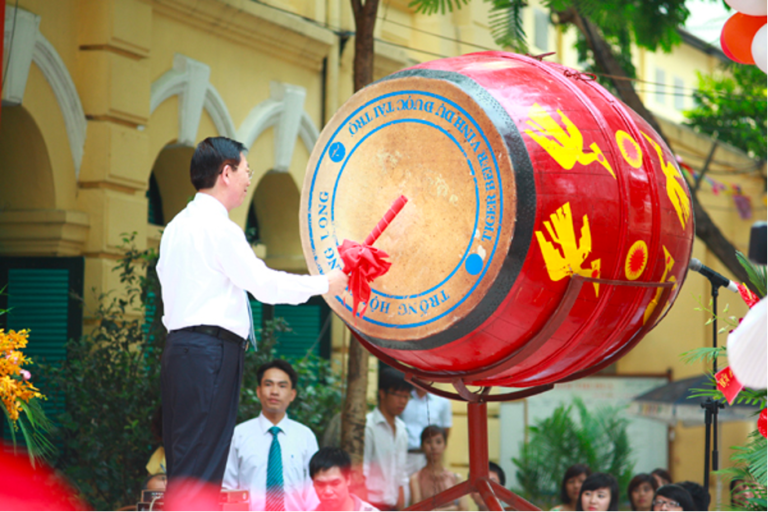
Trống cái (bass drum)
The trống cái is a large drum that is used in both folk and classical music. It is made from a wooden frame and covered with animal skin. The trống cái has a deep, resonant sound.
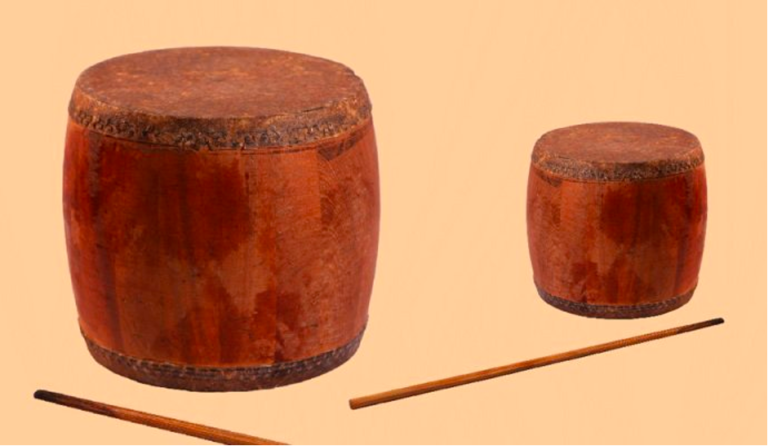
Trống chầu or trống đế (the largest of the set of drums used in Hát tuồng)
The trống chầu is a large drum that is used in Hát tuồng, a traditional Vietnamese opera. It is made from a wooden frame and covered with animal skin. The trống chầu has a loud, powerful sound.
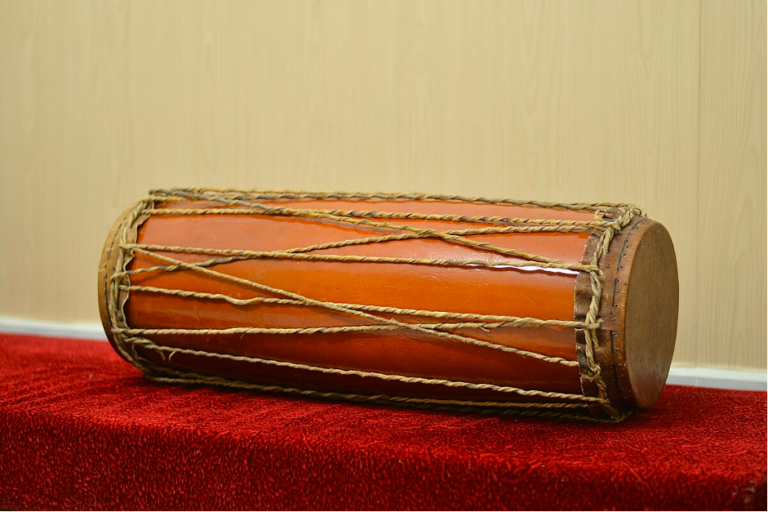
Trống cơm (rice drum)
The trống cơm is a small drum that is used in both folk and classical music. It is made from a coconut shell and covered with animal skin. The trống cơm has a high-pitched, sharp sound.
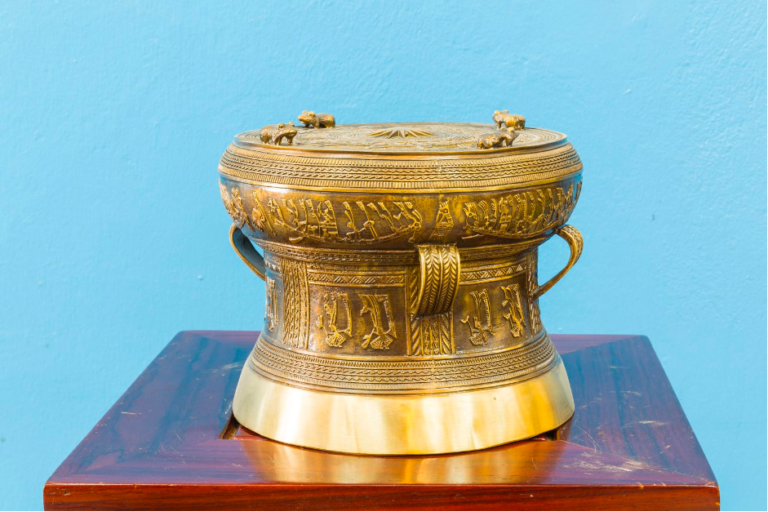
Dong Son drum (Trống đồng)
The Dong Son drum is a bronze drum that was used by the Dong Son culture in ancient times. It is decorated with intricate patterns and has a deep, rich sound.
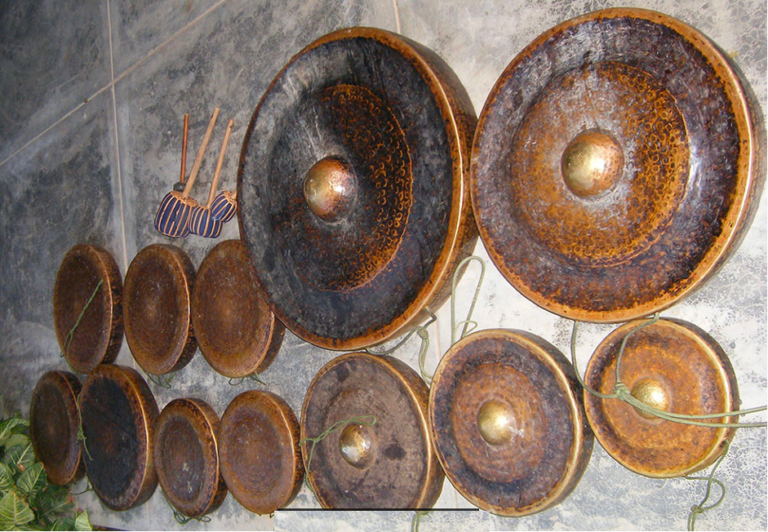
Cồng Chiêng (Vietnamese gongs)
Cong chieng (Vietnamese gongs) are a type of gong musical instrument traditionally made of bronze and used by the ethnic minority groups of the Central Highlands of Vietnam.
Cong chieng are typically made in sets of two to ten gongs of different sizes, which are played together to create a rich and complex sound. The gongs are played by hand or with a cloth-covered stick, and can produce a wide range of tones and rhythms.
They are considered to be sacred instruments and are used in a variety of rituals and ceremonies, such as weddings, funerals, New Year celebrations, and agricultural rites. The Cong Chieng Tay Nguyen Culture Space was recognized by UNESCO as a masterpiece of oral tradition and non-humanity on November 25, 2005.
Special Percussion Musical Instrument
Special Percussion Musical Instrument
Đàn đá (Lithophone)
Referring to the traditional musical instruments in Vietnam, it cannot fail to mention the Dan Da of the Central Highlands. It is a set of stone slabs of different sizes and shapes used to make percussive melodies. The tools to knock on the surface of the stone and the herb is also made of green stone. It requires skills to fashion the stones into a shape where they would produce a melodious sound.
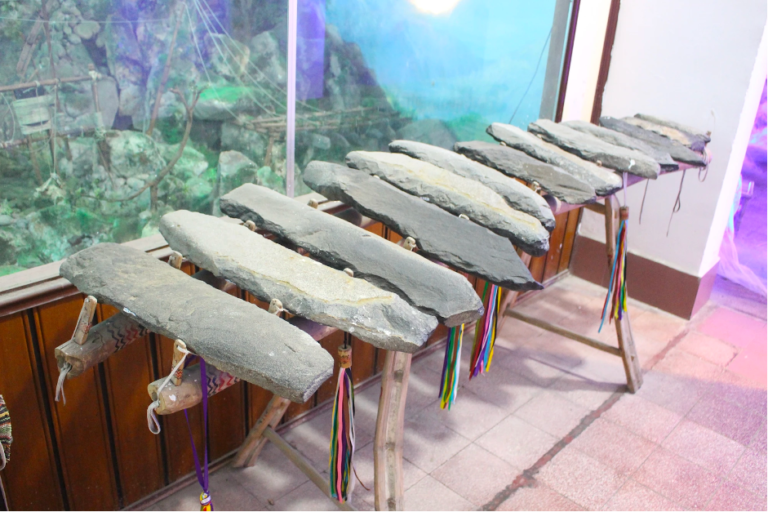
T'rung
The T’rung is a traditional musical instrument in Vietnam that is common among the small ethnic groups in the Central Highlands of Vietnam. It is made of short bamboo tubes of different sizes, with a notch at one end and a beveled edge at the other. The long big tubes give off low-pitched tones while the short small ones provide high-pitched tones. The tubes are put lengthwise horizontally and combined together by two strings.
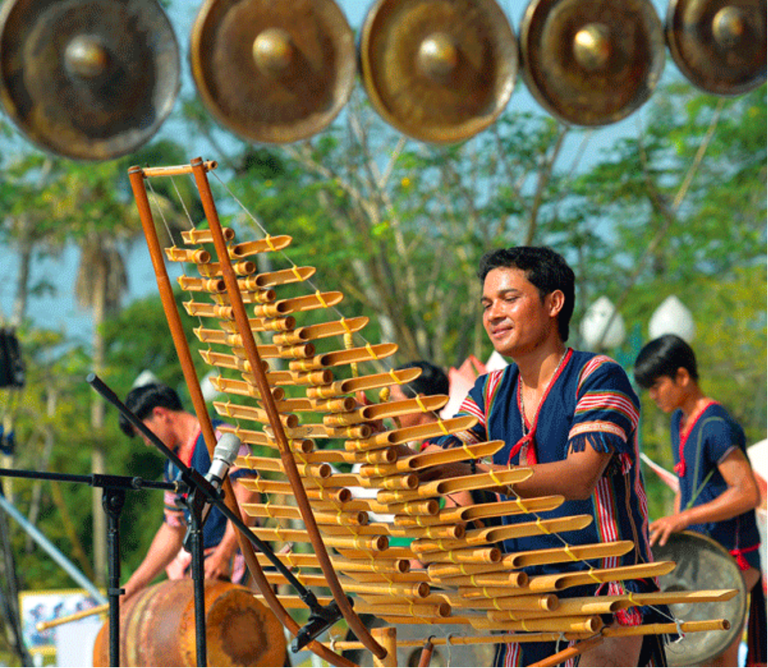
These are just a few of the many traditional Vietnamese musical instruments. Vietnam’s rich and diverse musical tradition is reflected in the wide variety of instruments that are used in its music. From the haunting sounds of the đàn bầu to the powerful beats of the trống cái, Vietnamese traditional instruments are a vital part of the country’s cultural heritage.
We would be pleased to have you visit and take in our breathtaking scenery, unwind on our white sandy beaches, immerse yourself in our exquisite culture, and get to know the people of the friendliest nation. Especially, to savor our delicious food at restaurants with Michelin ratings or to come and participate in our incredible mega-events involving culture, music, sports, and tourism!
Make your plan to Vietnam right now by obtaining a Vietnam visa at https://www.vietnam-evisa.org. We, a reputable and reliable Visa service, will assist you turn your plan into reality at the very first step.
Source: Indochina Tours